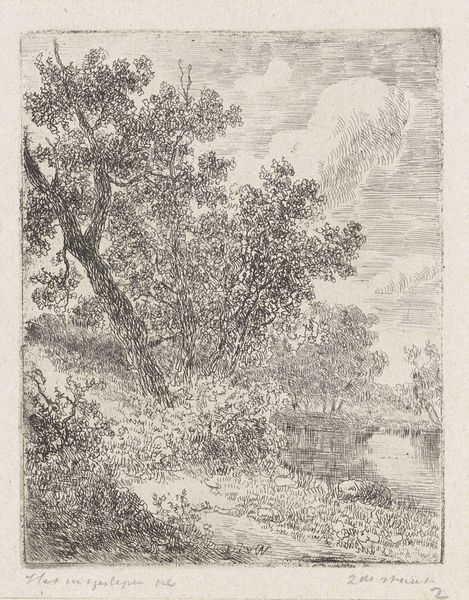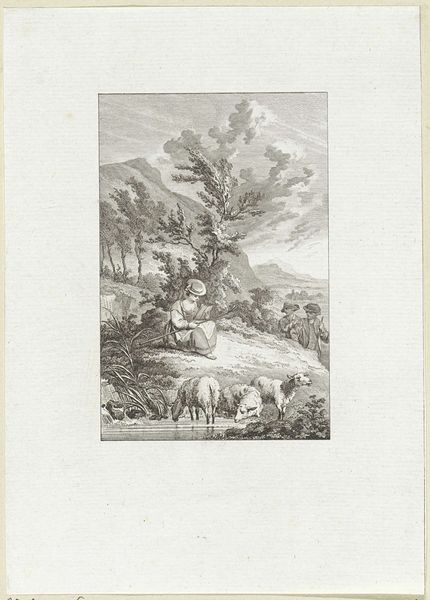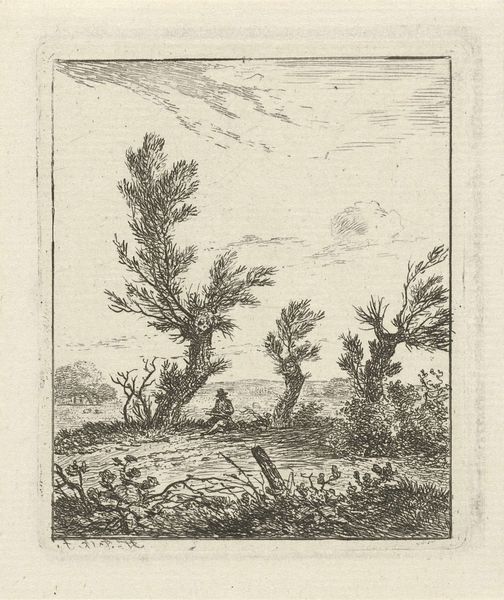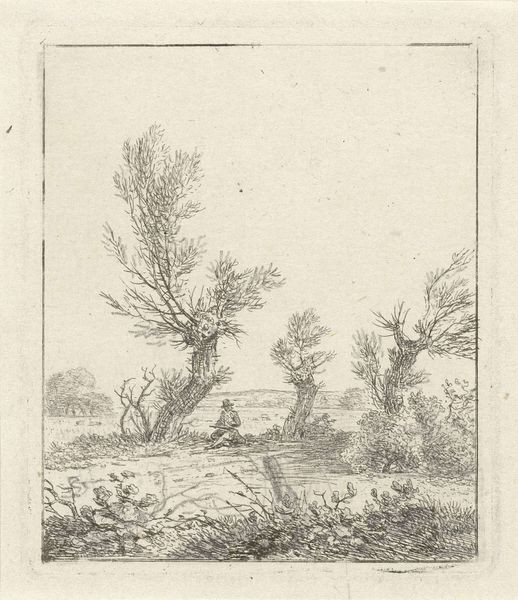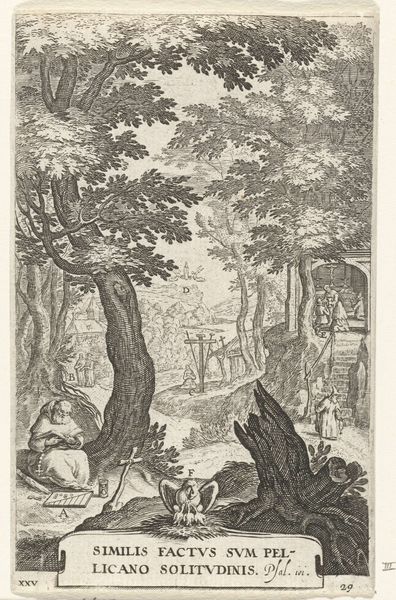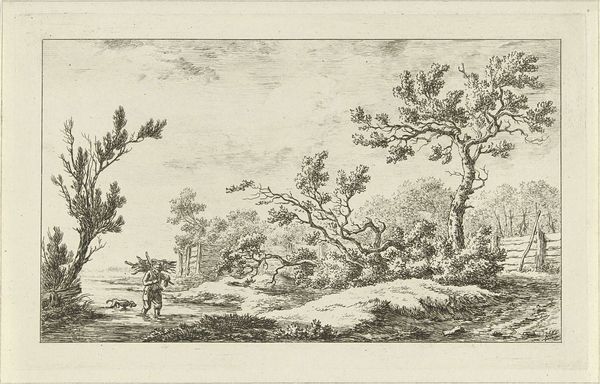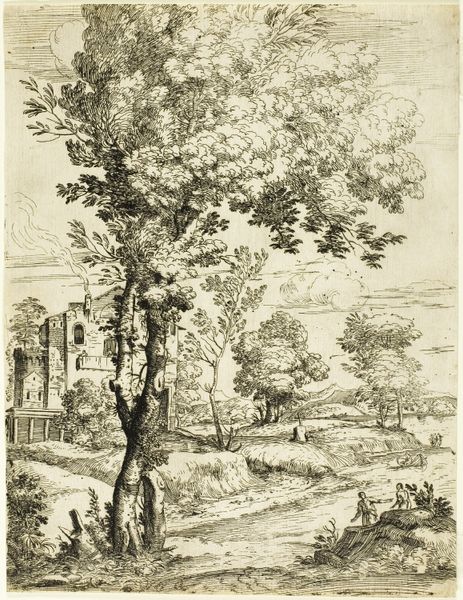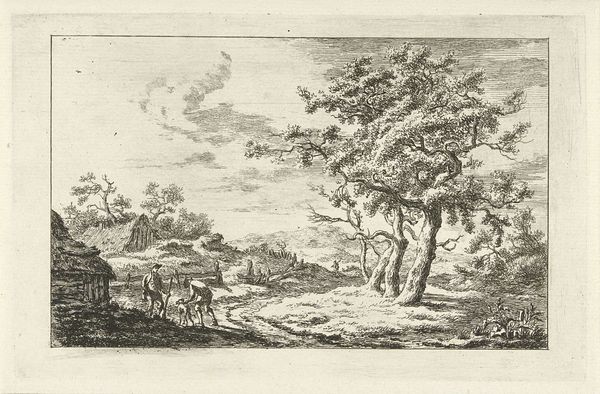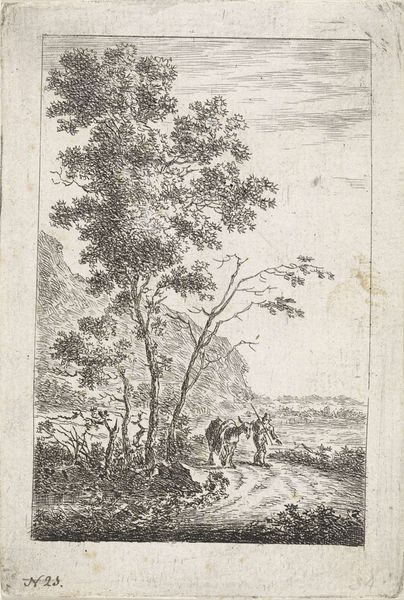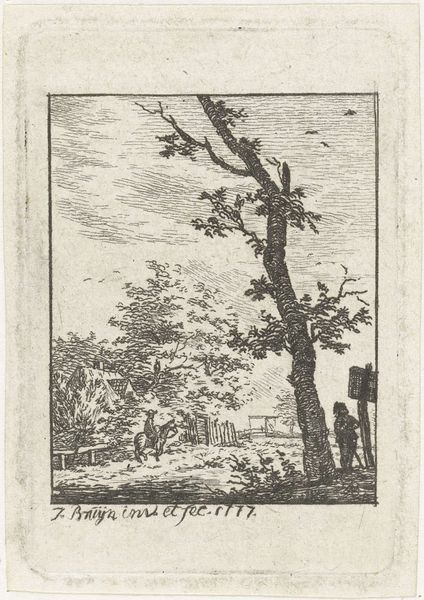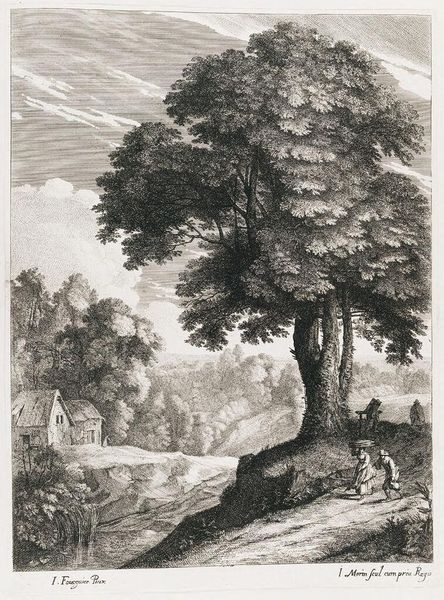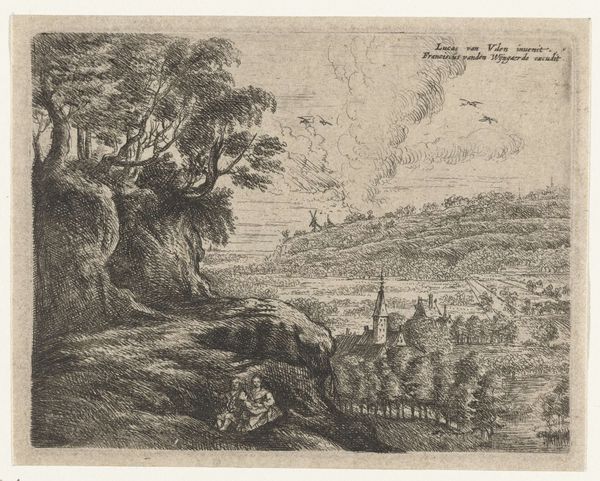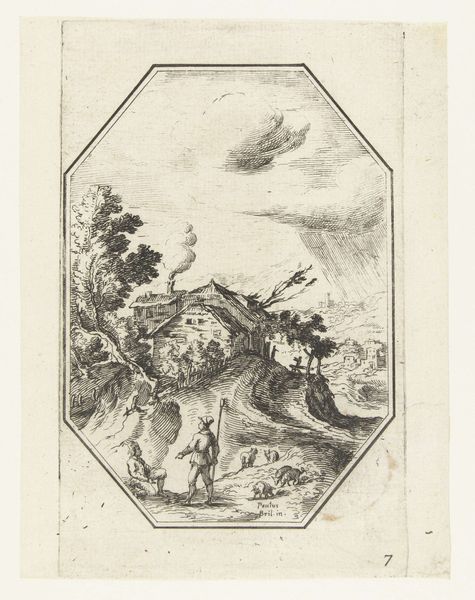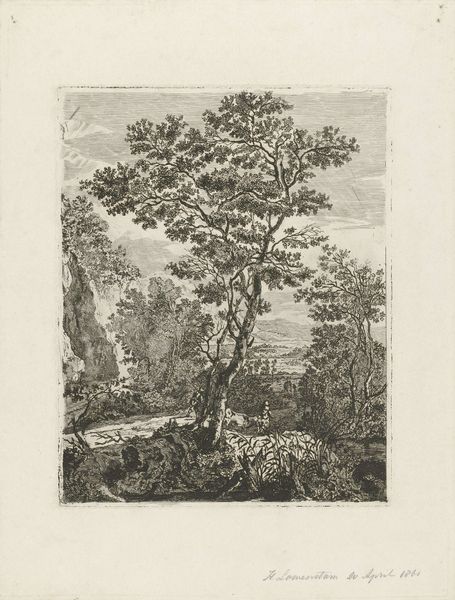
drawing, etching, ink
#
drawing
#
baroque
#
etching
#
landscape
#
ink
#
genre-painting
Dimensions: height 243 mm, width 170 mm
Copyright: Rijks Museum: Open Domain
This landscape with a bridge was etched by Antonio Cioci, using a metal plate, likely copper. Cioci would have painstakingly covered the plate with a waxy, acid-resistant ground, then used a sharp needle to scratch away the ground, exposing the metal beneath. The plate was then immersed in acid, which bit into the exposed lines, creating grooves. This process would have been repeated to achieve the desired depth and darkness of lines. Once Cioci was satisfied, he would have applied ink to the plate, wiping away the excess, so that it remained only in the etched lines. Finally, the plate was pressed onto a sheet of paper, transferring the image. The entire process demanded not only artistic skill, but also a deep understanding of materials, chemistry and mechanics. It speaks to a moment in history when image-making was not a simple click of a button, but a labor-intensive craft that blurred the lines between art and industry. In looking at this print, we can appreciate the skill, time, and process involved in bringing this image to life.
Comments
No comments
Be the first to comment and join the conversation on the ultimate creative platform.
